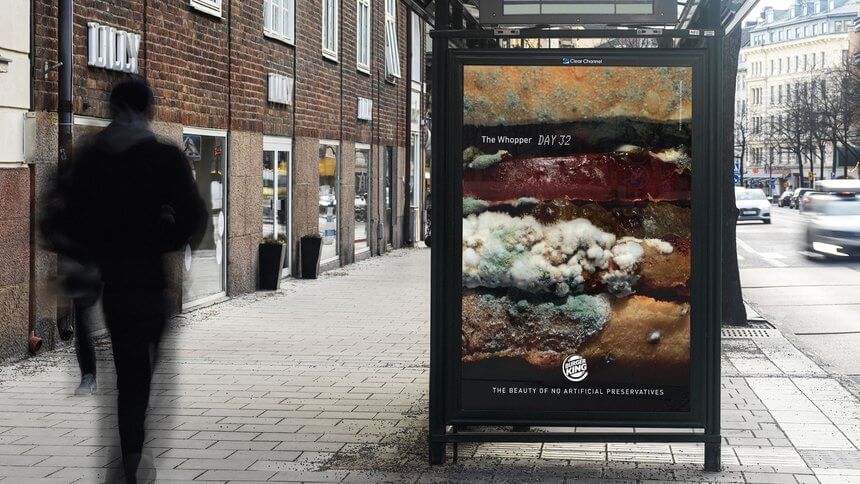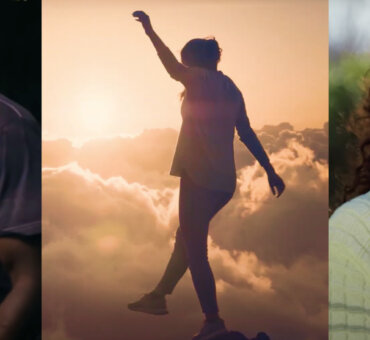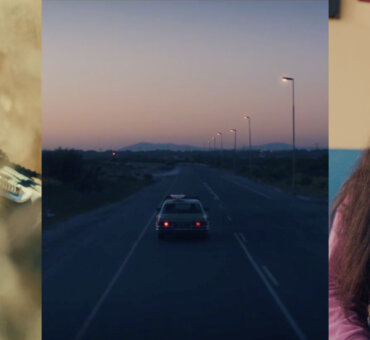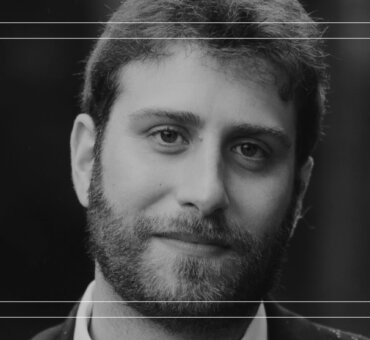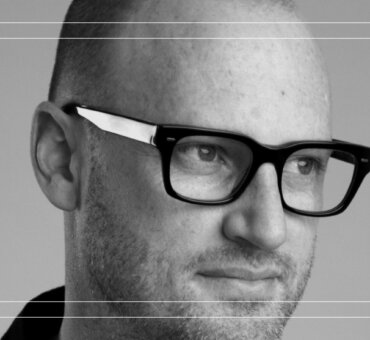When you ask a Creative Director at DAVID to talk about important projects, it doesn’t narrow down the conversation much. It’s really all they do. The agency has been on a winning streak since they started nearly ten years ago, and Fernando Pellizzaro is one of the creatives responsible for some of their most iconic campaigns.
He and his creative partner, Jean Zamprogno, are behind Coke’s “Try Not to Hear This” print series, Burger King’s “Eat Like Andy” spot, and so much more. In other words, if there’s a project tied to their names, it’s not a dull project. Their work is strange, funny, captivating, but most of all—impactful. In fact, it’s the entire reason for their existence.
“When you’re concepting an idea, you can’t always see what will happen, but once you start getting the results, you see how powerful an idea can be,” Fernando told us. “We have a responsibility to put work out there that inspires people. It’s important for creatives to realize that.”
Case in point: Burger King’s Moldy Whopper ad. For the first time in history, a fast-food chain is promoting its product by showing it decay over time. It’s a disgusting, beautiful, and crazy idea. And it’s also pure genius.
We had the chance to talk with Fernando about his work with DAVID Miami, and how the agency helped to develop the Moldy Whopper concept along with two other world-renowned teams. He shares what he learned about collaboration and creating social change with one moldy sandwich.
Filmsupply: What are some ad campaigns that have inspired you?
Do you remember the Sony commercial, with the bouncing balls in San Francisco? That was done by Fallon. I feel like that commercial was one that set up advertising as entertainment. After that, we started seeing a bunch of advertising as entertainment pieces.
Then there’s the example by Ogilvy Sao Paulo, the Dove Real Beauty Sketches, which was the first activation that was more like a social experiment. After that, I saw a bunch of other agencies trying to do those ideas. DAVID was born right after that. This spirit of big ideas has been around since day one at DAVID. There’s a term we use at DAVID, “DAVID Specials,” which are the big PR ideas. We’re always looking for those ideas.
How do you know when you’ve found one?
We’re always focused on the ideas. Is it original and will people talk about it? Then we let the idea decide where it needs to be. Bring us a problem, we come up with an idea and then we decide the medium. It doesn’t need to be an activation. It could be print, radio, or whatever.
For example, we did the “Try Not to Hear This” print campaign for Coke. It’s seemed like a regular print campaign, but we’re also playing with the idea of audio. So we submitted the ad to the audio/radio category at Cannes and they said they couldn’t accept the submission because it had no audio [laughs]. We wrote a huge e-mail explaining why it was an audio idea. And then they accepted it. Of course, we didn’t win anything in audio. But being able to submit a print campaign to an audio category was already a victory for us.Another great example is our “This Coke’s a Fanta” campaign. For me, it’s one of our most remarkable works that was very, very special. I’m not sure if you understand the context, but in Brazil, the phrase “this Coke’s a Fanta” is a slur to refer to homosexuals. It’s very negative.
So, for LGBT+ Pride Day, we decided to launch a can of Coke with Fanta inside. On the can, it said, “This Coke’s a Fanta. So What?” It’s silencing the haters because when you say something with pride, you disarm them. You’re proud of what you are. It was special because there was zero media investment. Zero. We just made the cans and we got one billion impressions.
We were talking with Google and the idea changed the way people searched for the expression, too. Before the idea, the term was searched alongside hate words. After the campaign, all the related words were connected to terms like pride, and being proud of who you are. It’s one of our biggest goals, to impact culture and not just sell a product.
That’s a great segue into Moldy Whopper. How did that project come up?
Moldy Whopper was part of something very big that Burger King was building. It took them four years to make the Whopper 100 percent free of artificial preservatives and colors. It was first a brief for DAVID Miami 4 years ago called TNT (Trust in Taste), but they opened it up to the other offices including Brazil and Buenos Aires. Me and Zampa [Jean Zamprogno] were working in San Paulo at the time.
We worked very hard on this brief because it was a huge opportunity for us to do something for BK US. We found some videos, I think it was maybe a Buzzfeed video, comparing different fast-food burgers getting moldy. Then we started building it into this campaign we called Moldy Whopper .
But, Burger King wasn’t ready because they were still in the process of removing the artificial ingredients from their burgers. We pushed the idea many, many, many times. But, the project was on hold. Then, last year, Sweden was the first market to achieve that goal of having a preservative-free Whopper.
There’s an agency in Sweden, INGO, which also belongs to the WPP. They had a similar idea, so we decided to start working together. Then, Publicis came with a similar idea, but with a different approach of executing. So, we ended up working together, the three agencies. We all had our contributions to the project and that’s what you see now. It was a really long process to figure out everything.
How so?
The production of the shoot was a time-lapse and it takes time for the burger to grow mold. So every shoot took between 30 and 34 days if I remember correctly. The first shoot didn’t work. The burger looked very bad, but in a way that we couldn’t use it. And then we tried again, with two burgers this time—one camera on each burger. It took 34 more days and we finally got the results that you actually saw on the prints and the film.
The biggest challenge was finding a market that was ready for it and finding an execution that was simple enough. Our original idea was to compare the burger with McDonald’s, but I’m glad we didn’t because all the media outlets did a comparison for us. They were saying, “Remember the McDonald’s videos? Those burgers stayed perfect forever because of the preservatives.”
A huge shout out to Bjorn and the team at INGO team because the campaign was actually produced there in Sweden. They figured out all the mold and did research on how different molds grow on the burger. It was very challenging.
Bringing this to life was so hard. Imagine convincing all the franchises to show a rotten burger. It’s crazy. It’s the first time a food brand has ever shown their own product with mold to make a statement. Just being part of it was really amazing.
Was it difficult to collaborate with three different agencies?
We definitely weren’t used to it. But honestly, it wasn’t too hard because we all knew we had something special. Everyone was looking to do the best work and put the best idea out there. Each agency gave a direct contribution to the process. In the end, we are super happy we managed to put an idea like this out there. And if we need to partner with another agency to make it happen, we’re going to make it happen.
What did it teach you about advertising?
This kind of work teaches you a lot. Never give up and always try to find a solution to make an idea happen. In this case, the solution was to partner with two other agencies to find a market that was already ready to launch the idea—to work as a team and win as a team. But, it also taught us that an idea can have a big impact on people’s lives.
One of our biggest goals with Moldy Whopper was to inspire and change the fast-food industry for good. We wanted other brands to see what we are doing and also clean up their burgers. This is something I learned by working on projects like “This Coke’s a Fanta.” We have so much power in our hands to create change in society.
When you’re concepting an idea, you can’t always see what will happen, but once you start getting the results, you see how powerful an idea can be. We have a responsibility to put work out there that inspires people. It’s important for creatives to realize that. You push yourself to do more relevant work, work that not only tries to sell a product but also sells something much bigger than that.
Goodby Silverstein & Partners’ CCO Margaret Johnson has worked on her own projects that have made a difference in the world. Read our conversation with her here.
